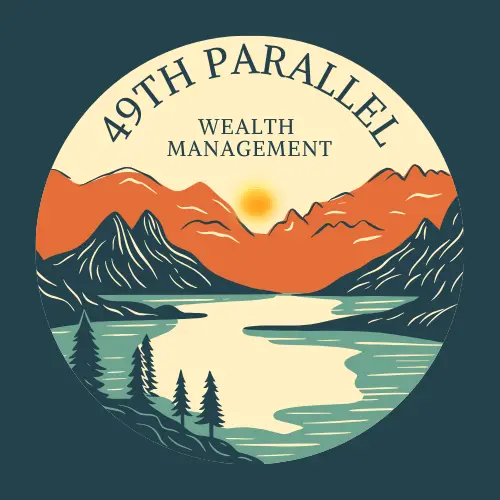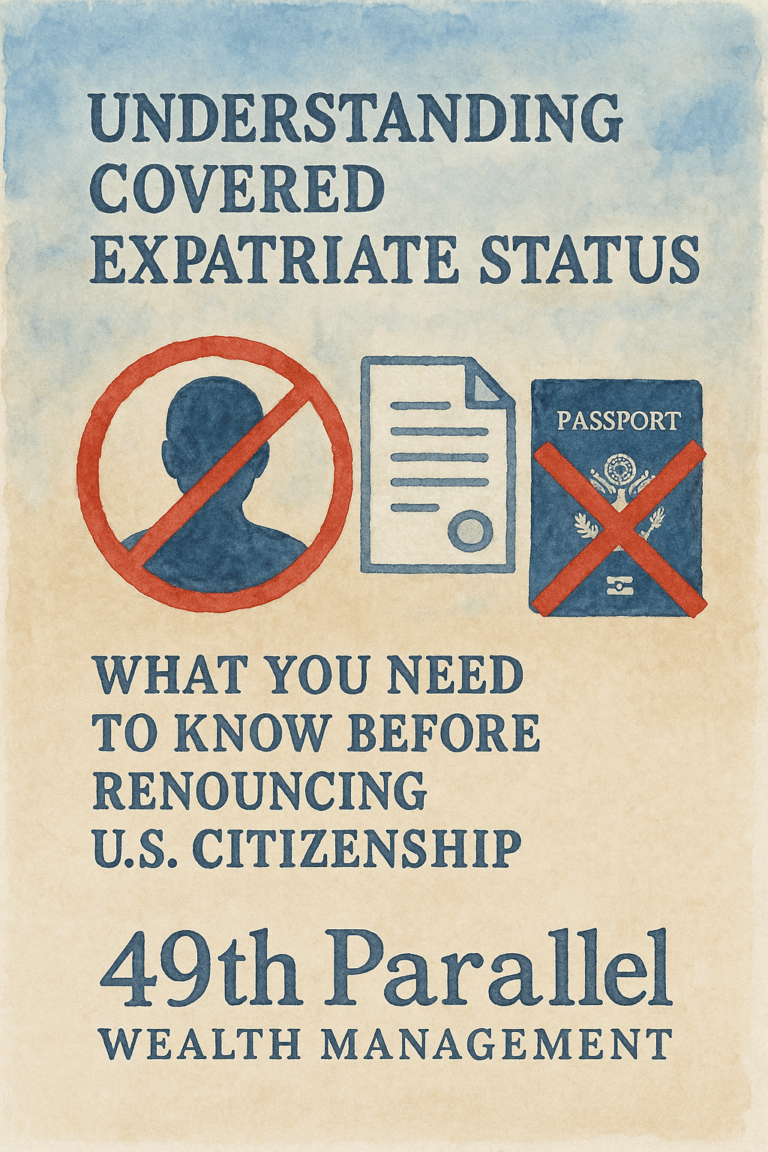 alt="AUM Model" class="wp-image-1234"/>
alt="AUM Model" class="wp-image-1234"/>When selecting a financial advisor, many clients default to the Assets Under Management (AUM) fee structure, which may initially appear straightforward. Under this model, an advisor charges a percentage of your total assets under their management.
At first glance, this structure aligns the advisor’s success with the client’s financial success, as fees rise and fall with the portfolio value. However, a deeper examination reveals a potential conflict: the higher the advisor’s fees, the more they chip away at the very returns they aim to increase for their clients.
So, how should clients evaluate whether an advisor’s fees truly reflect value or if the advisor’s priorities may lean more toward profit than client prosperity? Making a careful assessment ensures the partnership genuinely supports your financial success.
AUM Fees and Conflicts of Interest
One of the most apparent benefits of the AUM model is that, theoretically, the advisor has an incentive to grow your assets. Their earnings directly increase as your portfolio expands. This makes sense because more time, resources, and expertise are needed to manage larger portfolios.
However, there’s a flip side: as your account balance increases, so do the fees you pay, which can significantly impact your long-term returns. The greater the fee percentage, the more it detracts from the growth of your investments, which can be especially impactful over decades.
The Hidden Message in Fee Structures
A financial advisor’s fee structure can often reveal more about their priorities than it does about the services they offer. When two advisors have similar qualifications and provide similar services, the one with lower fees may offer greater value.
Advisors with higher fees might subtly (or overtly) signal that their profit margin takes precedence over your financial health. This isn’t always the case, but the trend is undeniable: advisors pushing the upper limit of acceptable fees often aim to maximize their income.
Conversely, some advisors intentionally maintain competitive rates as a testament to their commitment to client success. They aim for sustainable growth for both their clients and their firm, prioritizing your financial well-being over maximizing their own profit margins.
On the other hand, a firm that prioritizes profits over clients may cut costs in ways that impact the client experience, such as by using outdated technology, providing limited one-on-one time, hiring lower paid and less qualified advisors, or venturing into additional revenue streams, like insurance or annuity sales, that may not directly benefit their clients and create additional conflicts of interest.
Profit vs. Client Financial Success: A Balancing Act
Advisors who solely focus on client success might ideally not charge any fee. In practice, however, fees are necessary to sustain a financial advisory business. The question is how much is appropriate. Advisors who prioritize their clients’ financial success over maximizing their profit are careful to avoid crossing the line into excessive fees. Instead, they aim to balance fair compensation for their efforts and expertise with reasonable costs that ensure long-term value for their clients.
Evaluating an Advisor’s Value: Beyond Fees
When assessing an advisor, fees are just one piece of the puzzle. Higher fees do not automatically translate to better service or investment results. Instead, consider the following factors:
- Qualifications and Experience: Does the advisor have reputable designations and a track record of success? Look for qualifications like Certified Financial PlannerTM (CFP®) or Chartered Financial Analyst (CFA) that indicate a high standard of expertise and ethics.
- Service Consistency: If working with a large firm, inquire about who will manage your account. Some firms frequently reassign clients among advisors, which can lead to inconsistencies in service and planning. Also, is the person you are interviewing the one you will be working with? Firms often have one owner or employee who does most of the prospect meetings. They then assign the client to a different advisor, who the client has not met, once the client has committed. Make sure you know the history and qualifications of the advisor you will actually be working with.
- Transparency and Accessibility: Advisors who are willing to openly discuss fees, investment strategies, and planning processes are more likely to place client interests first.
- Client-Centric Policies: A client-centered advisor will offer transparent reports, personalized service, open access to your advisor, and consistent communication.
The Long-Term Cost of Fees
Consider this example: if you have $1,000,000 in assets and reduce your advisor’s fee by just 0.25%, you could save over $75,000 in fees over a 30-year period, assuming no investment growth. Even modest returns can push that difference well into the six-figures.
For many clients, this amount is substantial and worth investigating. A small percentage change in fees can have a meaningful impact on the growth of your wealth over time. Therefore, it’s wise to resist the notion that higher fees mean better services or returns.
Final Thoughts: Aligning with an Advisor Who Values You
Choosing an advisor with a sincere commitment to your financial well-being can make a significant difference over the years. Seek an advisor who prioritizes transparency, ethical practices, and client education. Rather than simply relying on the allure of high fees, such an advisor understands that the true measure of success is in helping clients reach their financial goals.
Ultimately, aligning with an advisor who genuinely values your success as much as their own is the best way to ensure a fruitful and mutually beneficial relationship. By scrutinizing fee structures, evaluating qualifications, and considering the longevity of the advisor-client relationship, you’re investing in a partnership that prioritizes sustainable growth and long-term value.
Here at 49th Parallel Wealth Management, we put our client’s interests first. If you need help or are dealing with uncertainty, reach out to see how we can provide you with peace of mind. From the Desert to the Tundra, we are your cross-border retirement experts!
 class="attachment-post-thumbnail size-post-thumbnail wp-post-image" alt="Social Security: Spousal and Survivor Benefits for Non-Citizen, Non-Resident Spouses" style="width:100%;height:100%;object-fit:cover;" srcset="https://49thparallelwealthmanagement.com/wp-content/uploads/2025/06/20250602_0650_Spousal-and-Survivor-Benefits_simple_compose_01jwred3seej9sat32kcjwkppw.png 1024w, https://49thparallelwealthmanagement.com/wp-content/uploads/2025/06/20250602_0650_Spousal-and-Survivor-Benefits_simple_compose_01jwred3seej9sat32kcjwkppw-200x300.png 200w" sizes="(max-width: 1024px) 100vw, 1024px" />
class="attachment-post-thumbnail size-post-thumbnail wp-post-image" alt="Social Security: Spousal and Survivor Benefits for Non-Citizen, Non-Resident Spouses" style="width:100%;height:100%;object-fit:cover;" srcset="https://49thparallelwealthmanagement.com/wp-content/uploads/2025/06/20250602_0650_Spousal-and-Survivor-Benefits_simple_compose_01jwred3seej9sat32kcjwkppw.png 1024w, https://49thparallelwealthmanagement.com/wp-content/uploads/2025/06/20250602_0650_Spousal-and-Survivor-Benefits_simple_compose_01jwred3seej9sat32kcjwkppw-200x300.png 200w" sizes="(max-width: 1024px) 100vw, 1024px" />Social Security: Spousal and Survivor Benefits for Non-Citizen, Non-Resident Spouses
 class="attachment-post-thumbnail size-post-thumbnail wp-post-image" alt="You Can’t Predict the Market, But You Can Prepare for It" style="width:100%;height:100%;object-fit:cover;" srcset="https://49thparallelwealthmanagement.com/wp-content/uploads/2025/05/20250529_2013_Market-Preparedness-in-Watercolor_simple_compose_01jwfjv4rteh39v0hrk6hbdthh.png 1024w, https://49thparallelwealthmanagement.com/wp-content/uploads/2025/05/20250529_2013_Market-Preparedness-in-Watercolor_simple_compose_01jwfjv4rteh39v0hrk6hbdthh-200x300.png 200w, https://49thparallelwealthmanagement.com/wp-content/uploads/2025/05/20250529_2013_Market-Preparedness-in-Watercolor_simple_compose_01jwfjv4rteh39v0hrk6hbdthh-683x1024.png 683w, https://49thparallelwealthmanagement.com/wp-content/uploads/2025/05/20250529_2013_Market-Preparedness-in-Watercolor_simple_compose_01jwfjv4rteh39v0hrk6hbdthh-768x1152.png 768w, https://49thparallelwealthmanagement.com/wp-content/uploads/2025/05/20250529_2013_Market-Preparedness-in-Watercolor_simple_compose_01jwfjv4rteh39v0hrk6hbdthh-600x900.png 600w" sizes="(max-width: 1024px) 100vw, 1024px" />
class="attachment-post-thumbnail size-post-thumbnail wp-post-image" alt="You Can’t Predict the Market, But You Can Prepare for It" style="width:100%;height:100%;object-fit:cover;" srcset="https://49thparallelwealthmanagement.com/wp-content/uploads/2025/05/20250529_2013_Market-Preparedness-in-Watercolor_simple_compose_01jwfjv4rteh39v0hrk6hbdthh.png 1024w, https://49thparallelwealthmanagement.com/wp-content/uploads/2025/05/20250529_2013_Market-Preparedness-in-Watercolor_simple_compose_01jwfjv4rteh39v0hrk6hbdthh-200x300.png 200w, https://49thparallelwealthmanagement.com/wp-content/uploads/2025/05/20250529_2013_Market-Preparedness-in-Watercolor_simple_compose_01jwfjv4rteh39v0hrk6hbdthh-683x1024.png 683w, https://49thparallelwealthmanagement.com/wp-content/uploads/2025/05/20250529_2013_Market-Preparedness-in-Watercolor_simple_compose_01jwfjv4rteh39v0hrk6hbdthh-768x1152.png 768w, https://49thparallelwealthmanagement.com/wp-content/uploads/2025/05/20250529_2013_Market-Preparedness-in-Watercolor_simple_compose_01jwfjv4rteh39v0hrk6hbdthh-600x900.png 600w" sizes="(max-width: 1024px) 100vw, 1024px" />You Can’t Predict the Market, But You Can Prepare for It
 class="attachment-post-thumbnail size-post-thumbnail wp-post-image" alt="Understanding Covered Expatriate Status: What You Need to Know Before Renouncing U.S. Citizenship" style="width:100%;height:100%;object-fit:cover;" srcset="https://49thparallelwealthmanagement.com/wp-content/uploads/2025/05/Expatration.png 1024w, https://49thparallelwealthmanagement.com/wp-content/uploads/2025/05/Expatration-200x300.png 200w, https://49thparallelwealthmanagement.com/wp-content/uploads/2025/05/Expatration-683x1024.png 683w, https://49thparallelwealthmanagement.com/wp-content/uploads/2025/05/Expatration-768x1152.png 768w, https://49thparallelwealthmanagement.com/wp-content/uploads/2025/05/Expatration-600x900.png 600w" sizes="(max-width: 1024px) 100vw, 1024px" />
class="attachment-post-thumbnail size-post-thumbnail wp-post-image" alt="Understanding Covered Expatriate Status: What You Need to Know Before Renouncing U.S. Citizenship" style="width:100%;height:100%;object-fit:cover;" srcset="https://49thparallelwealthmanagement.com/wp-content/uploads/2025/05/Expatration.png 1024w, https://49thparallelwealthmanagement.com/wp-content/uploads/2025/05/Expatration-200x300.png 200w, https://49thparallelwealthmanagement.com/wp-content/uploads/2025/05/Expatration-683x1024.png 683w, https://49thparallelwealthmanagement.com/wp-content/uploads/2025/05/Expatration-768x1152.png 768w, https://49thparallelwealthmanagement.com/wp-content/uploads/2025/05/Expatration-600x900.png 600w" sizes="(max-width: 1024px) 100vw, 1024px" />Understanding Covered Expatriate Status: What You Need to Know Before Renouncing U.S. Citizenship


